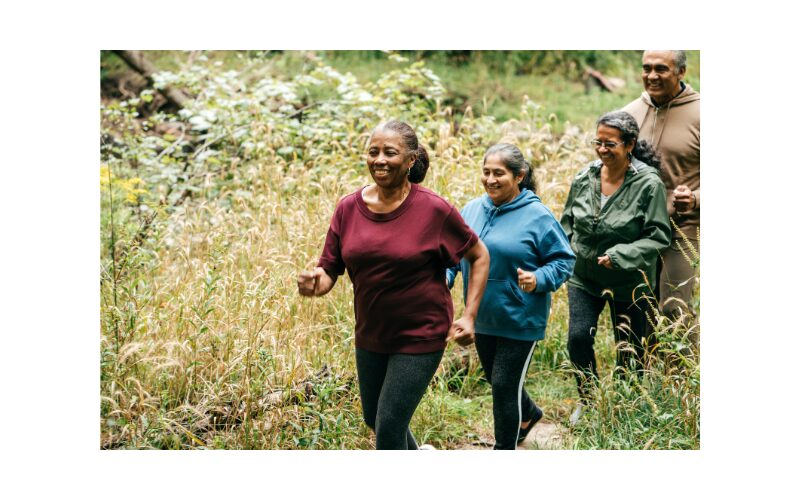How Regular Walking Improves Senior Well-being
Walking is a simple yet transformative activity that can significantly enhance the quality of life for seniors. It’s not just about taking steps; it’s about unlocking a healthier, more fulfilling lifestyle. As we age, staying active becomes increasingly important, and walking offers a low-impact, accessible way to promote both physical and mental health.
This article explores the numerous benefits of walking for seniors, from improving physical fitness to boosting emotional well-being. Whether you’re looking to manage chronic conditions, strengthen social connections, or simply feel better overall, walking is an excellent choice. Let’s dive into how regular walking can pave the way to better health and happiness for older adults.
1. Physical Health Benefits: Walking as a Senior’s Best Ally
Step 1: Strengthening the Heart
Walking is a gentle cardiovascular exercise that gets the heart pumping without straining it. For seniors, regular walks can lower blood pressure, reduce the risk of heart disease, and improve overall circulation.

Step 2: Easing Joint Pain
Joint pain, often caused by arthritis, can discourage physical activity. However, walking helps keep joints flexible and reduces stiffness by promoting the flow of nutrients to the cartilage. It’s like giving your joints a tune-up every time you move.
Step 3: Managing Chronic Conditions
Conditions like diabetes and osteoporosis can be better managed with a consistent walking routine. Walking helps regulate blood sugar levels and strengthens bones, reducing the risk of fractures.
Step 4: Enhancing Immune Function
Did you know walking can boost your immune system? It stimulates the production of white blood cells, which are essential for fighting off illnesses. For seniors, this means fewer sick days and better overall health.
Step 5: Weight Management
Walking burns calories and helps maintain a healthy weight. Even a brisk 20-30 minute walk daily can make a significant difference, reducing the risk of obesity-related complications.
Step 6: Improving Balance and Coordination
Falls are a major concern for older adults. Regular walking enhances balance and coordination, reducing the likelihood of falls and increasing confidence in daily movements.
2. Mental Health Rewards: Walking for a Happier Mind
Step 1: Reducing Stress and Anxiety
Walking releases endorphins, the “feel-good” hormones, which help combat stress and anxiety. A walk in a park or nature setting can be particularly calming, offering a mental reset.
Step 2: Enhancing Cognitive Function
Studies show that walking boosts memory and cognitive abilities in older adults. It promotes blood flow to the brain, helping to maintain sharpness and mental clarity.
Step 3: Combating Depression
For seniors feeling isolated or down, walking can act as a natural antidepressant. The combination of physical activity, fresh air, and a change of scenery works wonders for mood improvement.
Step 4: Encouraging Mindfulness
Walking provides an opportunity for mindfulness—a chance to focus on the present moment. Whether it’s the rhythm of your steps or the beauty of your surroundings, it’s a meditative experience that soothes the mind.
Step 5: Building Routine and Purpose
Incorporating a daily walk into your routine gives structure and purpose to your day. This small habit can have a big impact on emotional well-being, creating a sense of accomplishment.
3. Social Connection: Walking as a Community Builder
Step 1: Joining Walking Groups
Walking groups for seniors offer more than exercise—they foster friendships and camaraderie. Sharing stories and laughter during a stroll makes the activity enjoyable and motivating.

Step 2: Strengthening Family Bonds
Walking with family members is a great way to stay connected. Whether it’s a casual walk around the neighborhood or an outing to a local park, it’s quality time well spent.
Step 3: Participating in Community Events
Many communities host walking events or charity walks, which are excellent opportunities for seniors to stay active while supporting a cause. It’s a win-win for health and social engagement.
Step 4: Pet Companionship
For pet owners, walking the dog provides a daily dose of exercise and a chance to connect with other pet owners. It’s a simple way to stay social while caring for your furry friend.
4. Crafting the Perfect Walking Routine for Seniors
Step 1: Start Slow
If you’re new to walking, begin with short, manageable distances. Aim for 10-15 minutes a day and gradually increase the duration as your stamina improves.
Step 2: Choose the Right Gear
Comfortable shoes with proper support are essential for preventing foot pain or injury. Wear weather-appropriate clothing to stay comfortable, regardless of the season.
Step 3: Find Safe Walking Paths
Select routes that are smooth and well-lit. Parks, walking tracks, or even indoor malls are excellent options for safe and enjoyable walks.

Step 4: Mix It Up
Keep your routine interesting by exploring different paths or incorporating intervals of brisk walking. Variety keeps the activity engaging and prevents boredom.
Step 5: Stay Hydrated
Even a mild walk can cause dehydration. Carry a water bottle and take small sips to stay refreshed.
Step 6: Track Your Progress
Use a pedometer or a smartphone app to monitor your steps and set achievable goals. Seeing your progress can be a great motivator to stay consistent.
5. Overcoming Barriers to Walking
Step 1: Addressing Mobility Issues
For seniors with limited mobility, walking aids like canes or walkers can provide the necessary support. Start with shorter walks and gradually build confidence.
Step 2: Managing Weather Challenges
Rain or shine, walking is possible with a little planning. On rainy days, consider indoor walking at a mall or fitness center. In the heat, opt for early morning or evening strolls.
Step 3: Staying Motivated
Find a walking buddy or join a group to keep the momentum going. Having someone to share the journey with makes it more enjoyable and less likely to skip.
Step 4: Setting Realistic Goals
It’s important to listen to your body and avoid overexertion. Set goals that match your current fitness level and celebrate small victories along the way.
Conclusion: Step Into a Healthier Future
Walking is more than just an activity—it’s a gateway to improved health, emotional well-being, and social connection for seniors. Its simplicity, accessibility, and myriad benefits make it an ideal exercise for older adults seeking a balanced and active lifestyle.
So, lace up your walking shoes and take that first step. Whether it’s a short stroll around the block or a scenic hike in nature, every step counts toward a healthier, happier you. Start today and experience the life-changing benefits that regular walking can bring. Your future self will thank you!

My name is Larry, and I’d like to thank you for visiting Senior Citizens Fitness. I’m so passionate about staying fit in my later years. I hope you found some useful information here. Thanks again, and please subscribe and leave comments.
Larry Mac


